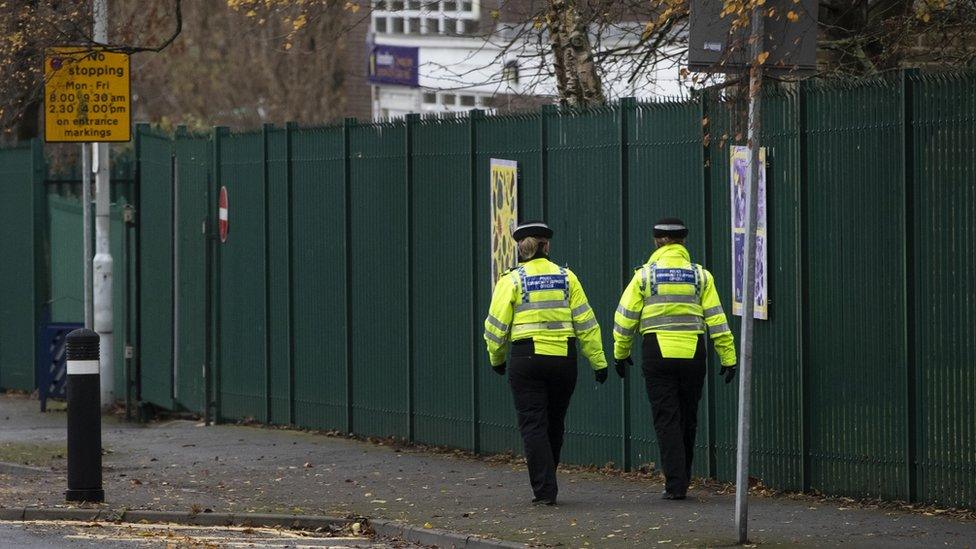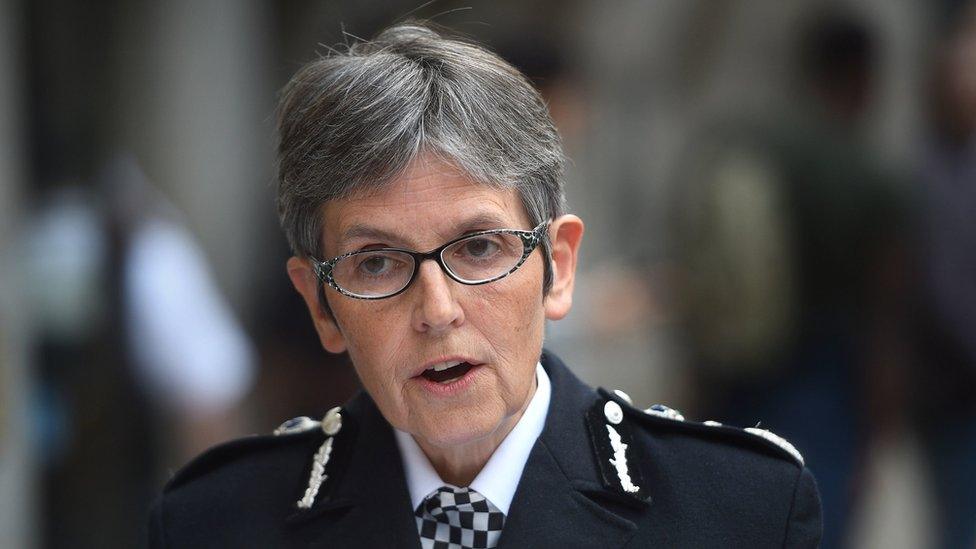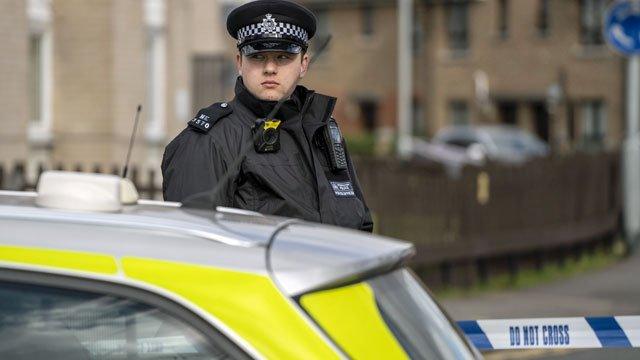MPs call for police in schools to cut youth violence
- Published

Schools in areas with a higher risk of youth violence should be given dedicated police officers, say MPs.
The Home Affairs Committee criticised the government's current violence reduction strategy as "completely inadequate".
It called on the new prime minister, Boris Johnson, to take "personal responsibility" for tackling knife and gun crime among young people.
But the Home Office said the MPs failed to fully recognise its action on crime.
In its report, external, the committee called for more investment into neighbourhood policing - including a commitment to get a dedicated police officer into "all schools in areas with an above-average risk of serious youth violence" by April 2020.
It said by committing the money for the officers in the government's autumn spending review, it would become part of a drive to "rebuild vital links" with the communities affected.
The report has been published as part of the committee's inquiry into youth violence for which MPs have heard evidence from campaigners, victims' families, doctors, senior police officers, children's charities and criminologists.
It also recommended that:
Named individuals in English and Welsh regions report directly to Downing Street on action to bring down violence
The government increases funding for youth outreach workers and community youth projects
Action is taken to reduce the number of pupils excluded from school, and to offer more support to those in alternative schools
What's being done to tackle youth violence?
The report criticised the government's strategy to cut violent crime in England and Wales for containing "no targets or milestones" and "few new actions".
Labour MP Yvette Cooper, who chairs the committee, said the Home Office had "taken a hands-off approach" to the "national emergency" of youth violence.
"To publish a weak strategy and convene a few roundtable discussions just isn't enough when faced with youth violence on this scale," she said.
"Serious violence has got worse after a perfect storm of youth service cuts, police cuts, more children being excluded from school and a failure of statutory agencies to keep them safe."
School exclusions and knife crime are both on the rise in England, but are the two actually linked?
New policing minister Kit Malthouse said greater interaction between police and schools could help build "very helpful" relationships as pupils enter their teenage years.
He said increased police powers could have a short-term impact, but the solutions to knife crime in particular were "complex and wide-ranging".
He told BBC Radio 4's Today programme: "This will take many years to do - and it's something we've been investing in, and need to invest more.
"It's definitely the case we need to turbo-charge what we're doing."
The government's Serious Violence Strategy, launched last April, committed £11m for an "early intervention youth fund" to help young people at risk of getting involved in violence.
The plan also committed funds for a national coordination centre to tackle "county-lines" drug routes to target links between the illegal drugs market and violent crime.
What's behind the problem?

The Home Affairs Committee has compiled arguably the most comprehensive study into the causes of and possible solutions to youth violence since the problems began to escalate in 2015.
Unlike the Home Office Serious Violence Strategy - which barely mentioned public sector budget cuts when it was published in 2018 - the committee identifies resources as a key factor, while emphasising that other issues, such as county lines drug gangs, have also played a part.
But there is no silver bullet, no one easy answer.
Indeed, the MPs caution against slogans that sound good, but which may lack substance, such as "public health approach".
Instead, the tenor of the report suggests violence will only come down through sustained hard work over many years by government, agencies and communities together.
How many officers are currently in schools?
Every school and further education college in London has been offered a "named officer", said Met Police Commissioner Cressida Dick, in her evidence to the committee, external.
The officers carried out "high visibility patrols" and delivered sessions and bespoke workshops to pupils, she said.
She told the committee there were currently about 280 "safer schools" officers in the capital, external - including 40 in the Police Cadets - and that she hoped there would be more than 500 based in the capital by the autumn.

Met Police Commissioner Cressida Dick told the committee she wanted more "safer schools" officers in London
But the committee said the picture was quite different in other parts of the country.
Ten of 33 forces in England told MPs they did not currently have one, including West Midlands Police - the largest force outside of London.
What's been the reaction to the committee's report?
The Home Office said the committee's assessment had failed to recognise the full range of urgent action the government was taking to keep our communities safe, and pointed to the new prime minister's pledge to recruit an extra 20,000 police officers, and the new national policing board.
"We have made it simpler for officers to use stop and search, and our Offensive Weapons Act will stop knives making their way onto our streets in the first place," a Home Office spokesman said.
The Children's Commissioner for England, Anne Longfield, said the government must treat youth violence as a "top priority" with a "large-scale and long-term plan" to help protect vulnerable children.
The Children's Society charity called for extra funding for "professional training, prevention, early intervention and youth services".
How bad is violent crime in England and Wales?
More people have been admitted to hospital with knife wounds in the four years since 2014, with a sharper increase in admissions involving people under-18 than adults, NHS data, external shows.
For under-18s, admissions increased from 303 to 566 - an 87% rise
Admissions of adults increased from 3,273 to 4,354 - a 33% rise

The latest figures, external from the Home Office - published in July - showed violent crime recorded by police in England and Wales had risen by 20% in the 12 months to March compared with the previous year.
In the year to March 2018, there were 693 homicides in England and Wales - including murder and manslaughter. Of these, 152 of them were aged between 16 and 24 years old, Home Office figures show., external
- Published27 March 2019
